30 Design Strategies and Tactics from 40 Years of Investigation
Appendix: Further information and examples
Design Lessons as Drama
Mathematics lessons can have a story. Students can be tasked with solving a problem involving the realistic application of mathematics to a dramatic and/or topical situation, or a fantasy context can be contrived to introduce more abstract pure mathematical problems. The key requirement is to engage the students by introducing an element of storytelling or role play that goes beyond the so-called ‘word problem’ – which often resolves to “Jared and Marcy need the solution to this equation” and is no more than an extra ‘translation step’ added to a traditional exercise.
In his blog on Three-Act-Math, Dan Meyer looks at how storytelling techniques can be applied to mathematics lessons, identifying three ‘acts’ of a mathematical story:
- Act 1
- Introduces the central conflict.
- Act 2
- In which the protagonist/student overcomes obstacles, looks for resources, and develops new tools.
- Act 3
- Resolves the conflict and sets up a sequel/extension.
See: https://blog.mrmeyer.com/2011/the-three-acts-of-a-mathematical-story/
Bowland Maths
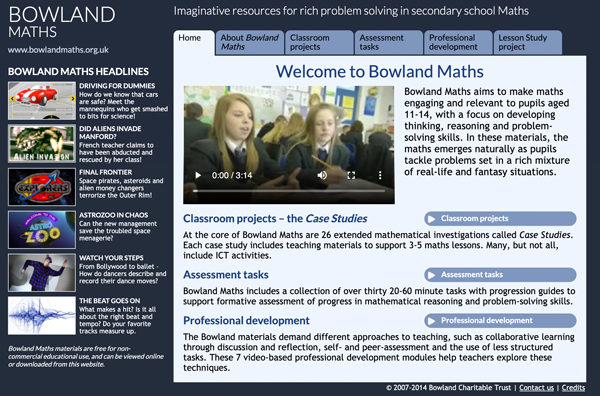
Link to ‘About Bowland Maths’
The aim to improve engagement was central to Bowland Maths, which set out:
“to develop a series of ‘Case Studies’ based around rich contexts which would make mathematical problems more interesting and/or relevant for pupils, with an emphasis on open-ended problems that required a range of process and problem solving skills to solve. The term case study was inspired by its use in institutions such as Harvard Business School, where it refers to a problem, usually taken from real life, that takes several days for students to address.”
Part of the design brief was that the mathematics aspect should not be immediately obvious, but should emerge over the course of the four lessons. Many of the resulting lessons had a drama/role-play element, some setting up plausible scenarios for the authentic application of mathematics and others concocting fantasy themes to ‘gamify’ more abstract mathematics. Both approaches may be necessary to cover the typical mathematics curriculum.
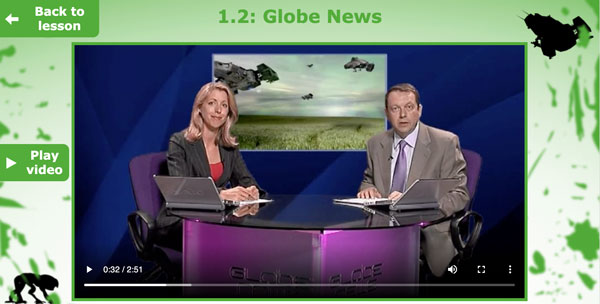
Link to Alien Invasion materials
Two specific case studies with contrasting approaches are:
Alien Invasion (developed for Bowland Maths by Twofour learning) is – as the name suggests – the story of a group of students who’s school trip is interrupted by the arrival of UFOs… Saving the day involves solving a variety of mathematical problems, The story progresses through the four lessons as the students try to plot a route to a safe meeting (co-ordinates, bearings, map scales) gather information about the aliens (graph interpretation) and rescue their teacher (breaking a code involving sequences). The context of the mathematics is, of course, highly contrived but sticks to the alien ‘theme’ while each activity is introduced by a video or audio clip of a news bulletin or phone call that maintains the ‘dramatic tension’.
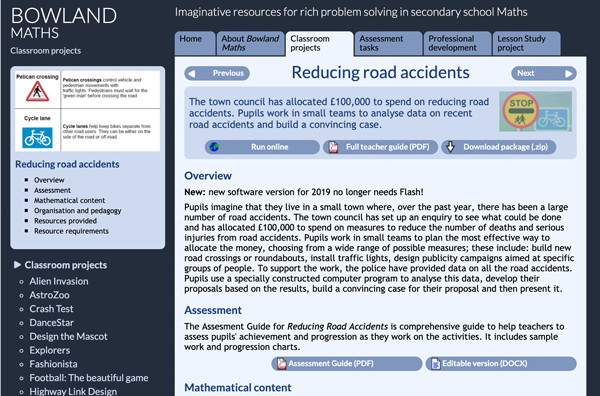
Link to materials
Reducing Road Accidents (developed for Bowland Maths by the Shell Centre for Maths Education) is a more realistic data-handling and quantitative literacy activity which places students in the role of being road safety advisors for a small town.
In the first stage, students examine police reports, photographs and a map. They identify possible causes of road accidents and brainstorm remedies.
The next stage uses a database ‘app’ with four years of accident reports, an interactive map, simple graphing tools and the ability to filter data by various categories. Students use this to look for patterns in accident locations, times, weather etc. and start to formulate hypotheses about the leading causes of accidents.
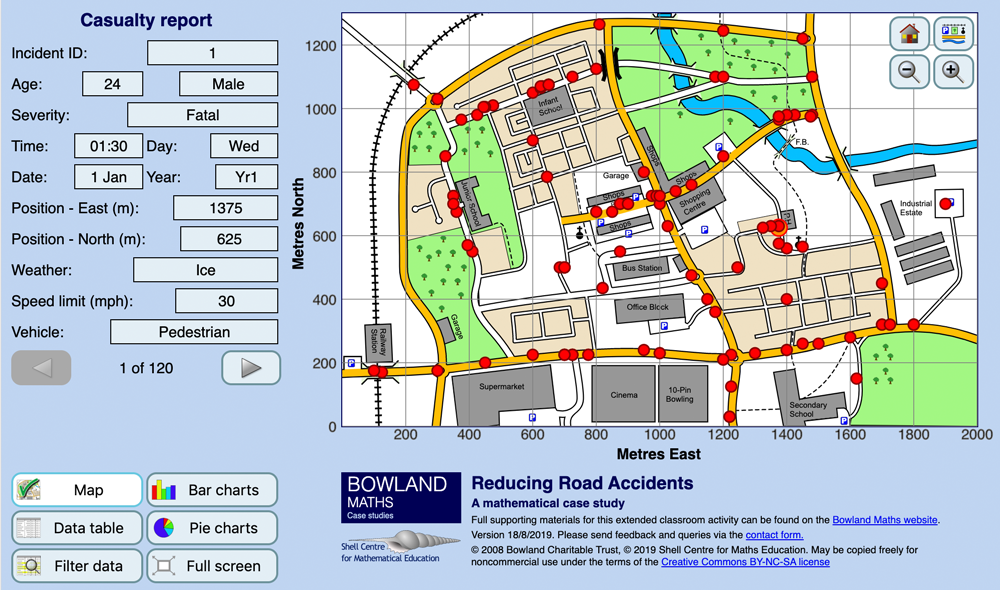
After having a chance to explore the data, the main task is to formulate a plan to reduce accidents. Students are given a £100,000 budget and price list of various measures (such as poster campaigns, speed cameras, cycle lanes).
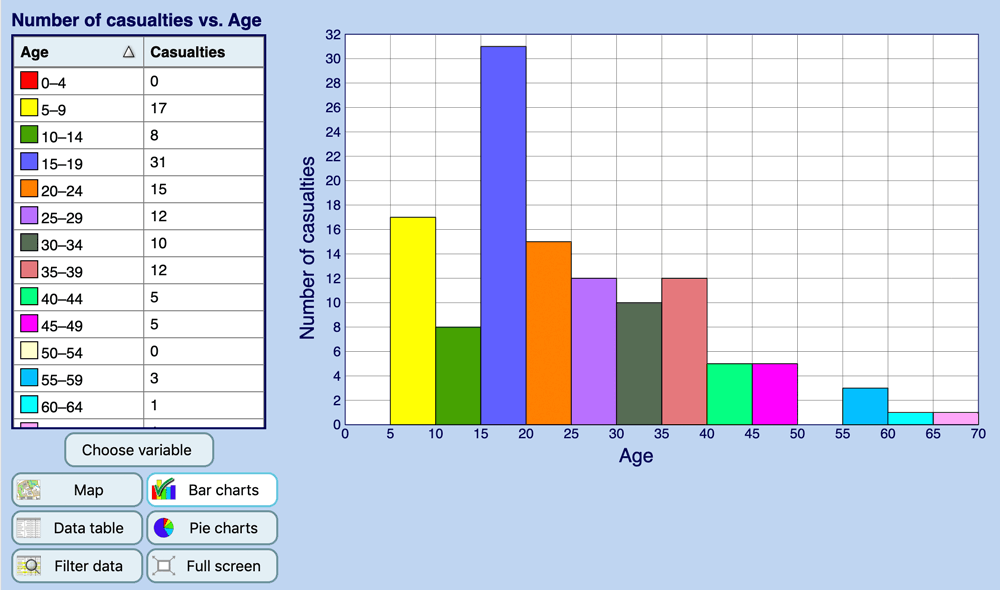
Ultimately, students are asked to present their plan to the class, supporting it with data gathered from the app. Presentations may take the form of a report, a poster or a computer presentation.
The goal with this lesson is to get students to engage with their role as ‘advisors’ rather than students doing an exercise. The mathematics is relatively simple – graph interpretation and simple statistics – but the problem-solving demand of preparing a reasoned, quantitative argument is substantial.
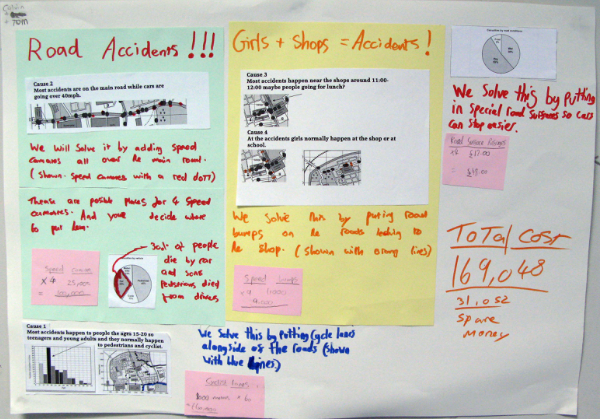
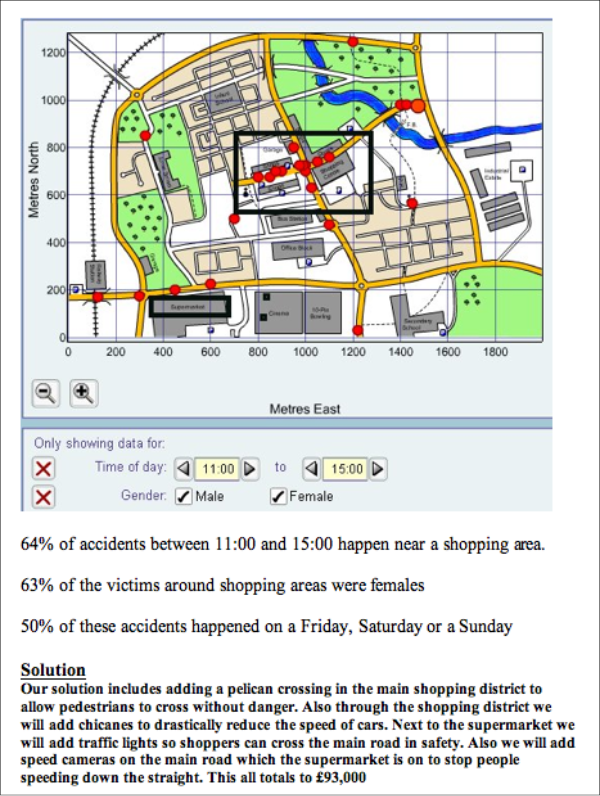

Enlarge…

Enlarge…
Links to materials:
- About Bowland Maths
- https://www.bowlandmaths.org.uk/about/bowlandstory.html
- Alien Invasion
- https://www.bowlandmaths.org.uk/projects/alien_invasion.html
- Bowland Maths – Reducing Road Accidents
- https://www.bowlandmaths.org.uk/projects/reducing_road_accidents.html
Numeracy Through Problem Solving – Plan a Trip
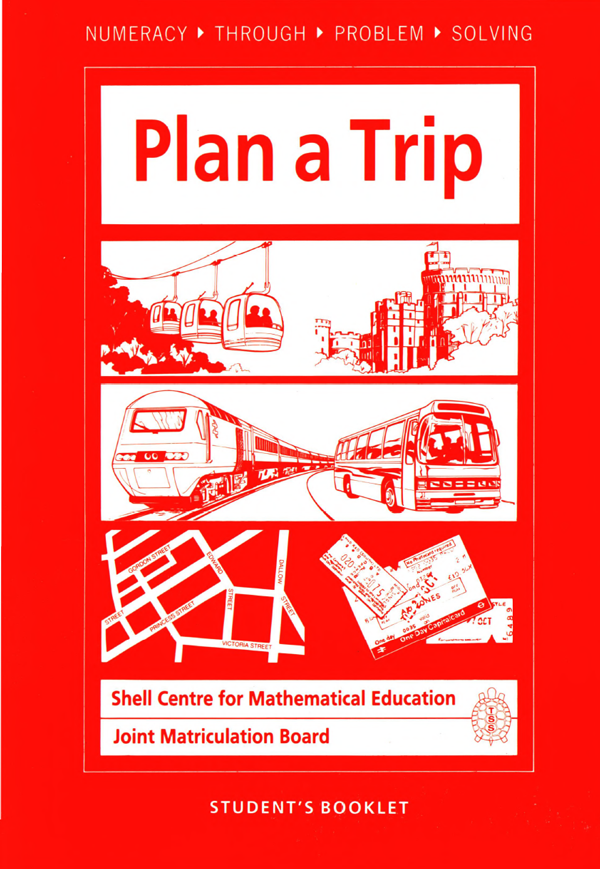
Link to materials
Numeracy Through Problem Solving is a sequence of five modules, developed by the Shell Centre for the UK Joint Matriculation Board around 1988, which develop students' ability to use mathematics together with other skills, in tackling problems of concern or situations of interest in everyday life. The ‘Plan a Trip’ module, in particular, incorporated elements of drama as students worked out the logistics in a school trip, researching timetables, opening times and prices. The ideal was that they should actually then go on the trip and put their planning to the ultimate test. For less courageous teachers, there was a card game that simulated the decision points and consequences of a fictitious trip
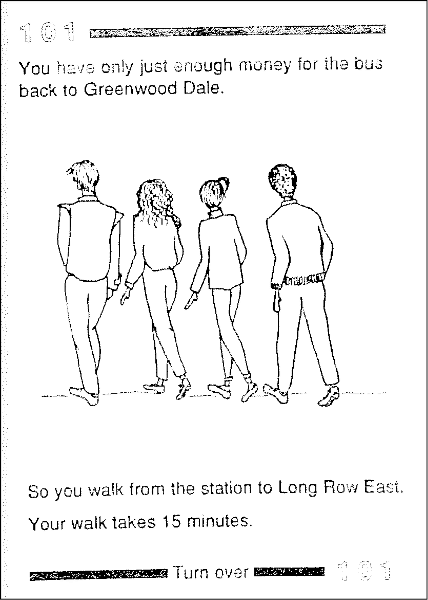
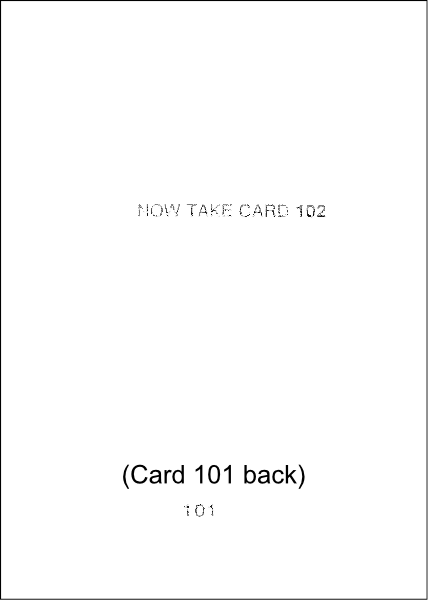
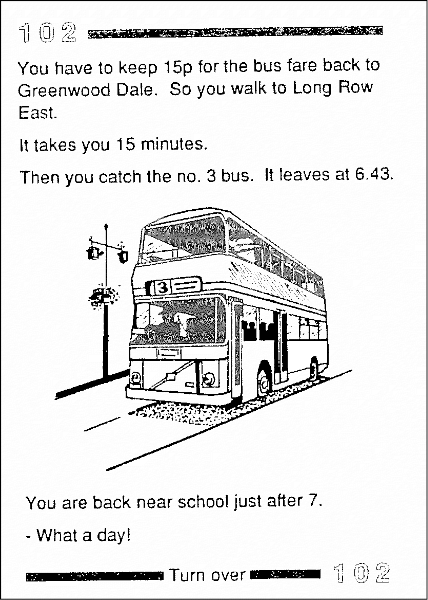
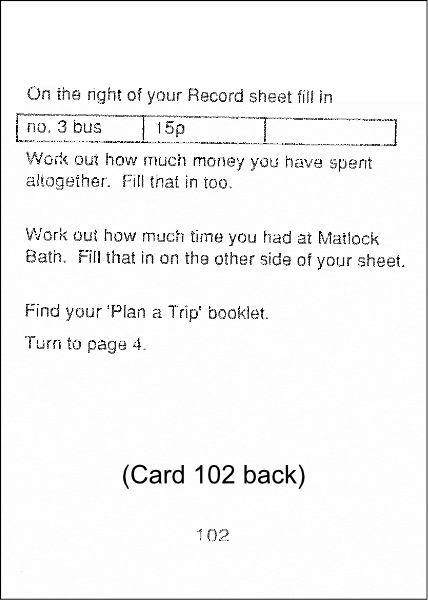
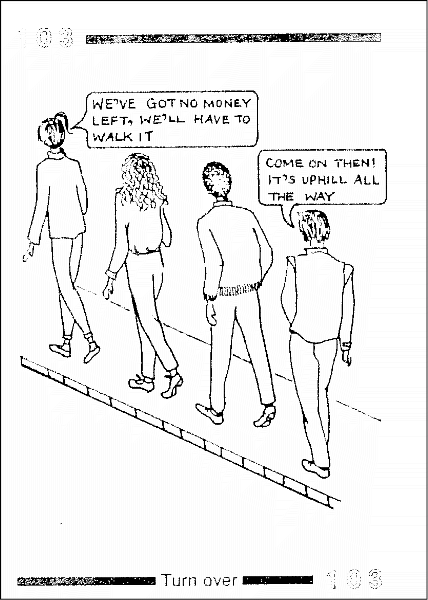
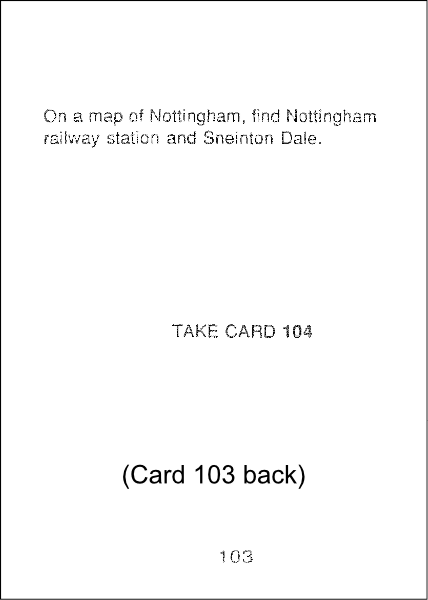
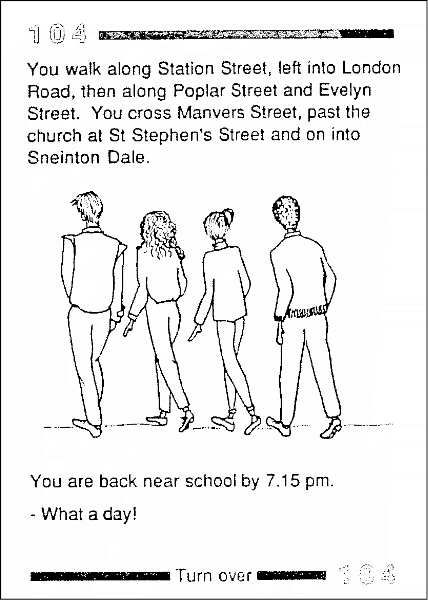
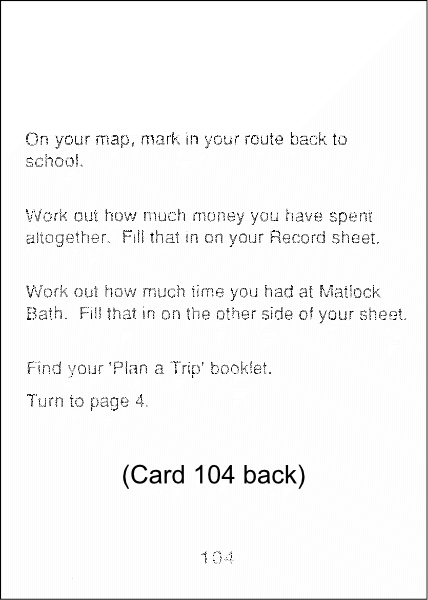
Enlarge…
Spoiler: the original plan would be pretty disastrous!
Links to materials:
- Plan a Trip
- https://www.mathshell.com/materials.php?series=numeracy&item=planatrip

